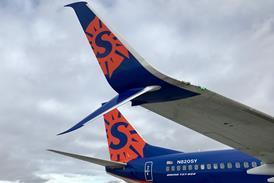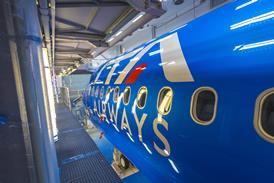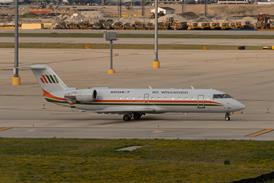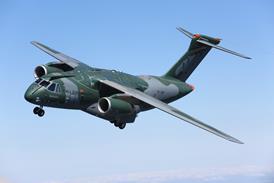Use of aircraft themselves as weather sensors is set to increase as US firm Optical Detection Systems (ODS) prepares to deploy an atmospheric data collection system based on a new sensor developed with NASA support.
Under the tropospheric airborne meteorological data reporting (TAM-DAR) programme, ODS plans to equip a large number of aircraft to collect data in the lower atmosphere, for use in improving weather forecasts.
Commercial aircraft are already used as sources of limited atmospheric information under programmes such as the US meteorological data collection and reporting system,in which 10 airlines provide in-flight reports of temperatures and winds aloft via Arinc's airborne communications and reporting system datalink. A similar system is operational in Europe, but in both cases the data is limited to the upper atmosphere, above most of the weather.
Under the TADMAR programme, ODS plans to equip large fleets of regional airliners, package freighters and business aircraft with a sensor and datalink package. These aircraft spend most of their time in the lower troposphere, and make frequent ascents and descents through the weather, and would generate more finely sampled spatial and temporal data for use in weather forecasts and meteorological models, says NASA researcher Taumi Daniels.
Rapid City, South Dakota-based ODS has developed a business plan that involves providing the sensors to operators, and paying installation and maintenance costs, then generating revenue by selling the raw data collected to commercial weather services. The company is hoping for government support for deployment, but has the financing in place to proceed privately, says president Mark Anderson. Data would be provided to government agencies "with restrictions", he says.
Anderson says ODS is in talks with several US commercial carriers. The plan calls for a six-month regional demonstration, beginning in October and involving 50 aircraft. NASA plans to participate in the trial, which is intended to show that the data collected can be used to improve weather forecasts. ODS plans to begin nationwide deployment in April 2004, and is talking to Canada and France about the system, says Anderson.
As an incentive to participate, operators will be granted free use of the data their aircraft collect and provided with discounted access to the data generated by the entire TAMDAR-equipped fleet. The TAMDAR probe can be used as an onboard ice-detection system, but this will not be offered initially as it would make certification of the installations more complex and costly. "The key to expediting certification is that it is an essentially autonomous unit," Anderson says.
ODS is about to begin flight testing the Version C pre-production probe, which weighs 0.7kg (1.5lb) and generates less than 0.2kg of drag at 200kt (370km/h). The multifunction sensor measures temperature, pressure and humidity, detects ice, and calculates altitude, airspeed, turbulence and winds aloft. This data, along with GPS position, is datalinked to the ground station. In the USA, the communications medium is likely to be a hybrid of terrestrial and satellite links, says Anderson.
Source: Flight International




















